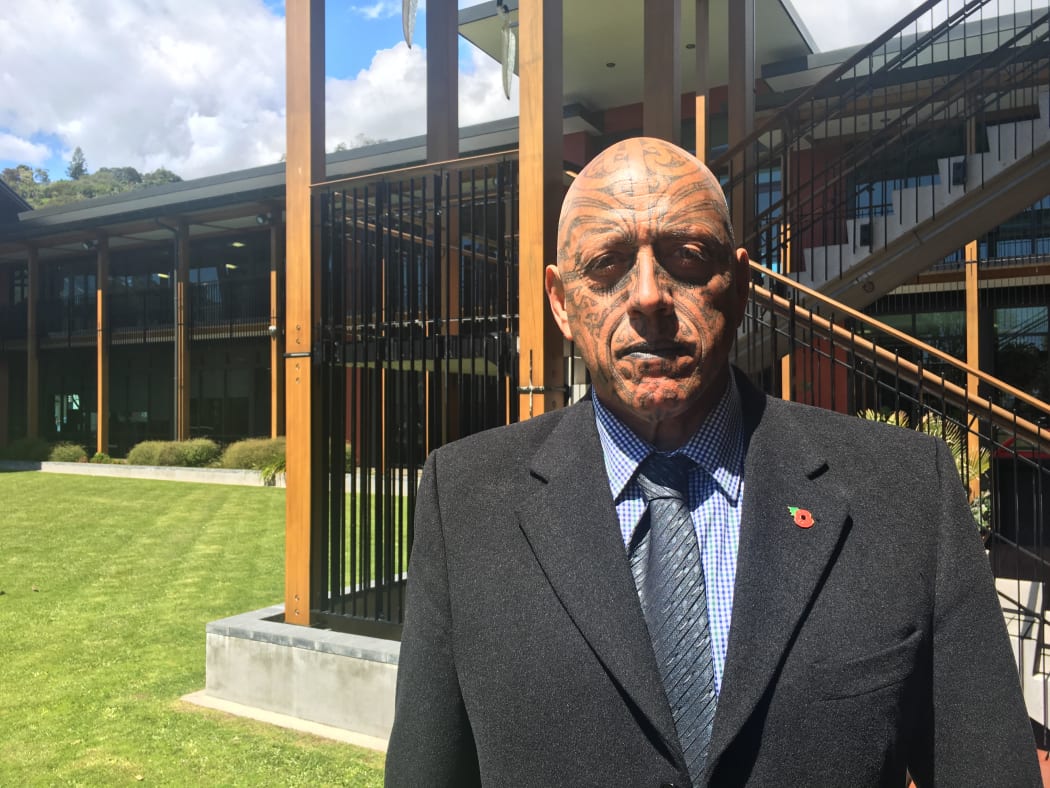The first national commemoration of the the 19th century New Zealand Wars is taking place in Te Tai Tokerau - with Northland iwi hosting a series of events to mark the occasion.
From 9-11 March, He Rā Maumahara will include a mass haka, tours, marae-hosted activities and panel discussions with a focus on the Ohaeawai and Ruapekapeka battle sites.
The event is the culmination of the Homai he Ra / Give a Day campaign that gained traction after Otorohanga Students presented a 13000-signatures petition to the government in 2015, in support of the day.

Harawira Pearless Photo: RNZ/Justine Murray
Historian Harawira Pearless is writing the history of D Company of the 28th Māori Battalion.
As part of his research he travelled to battle sites in Tunisia and Crete. In 2017 he completed his doctoral thesis about the central importance of remembrance of the 28th Māori Battalion.
“We have always remembered, but what’s happening now with the cyclic period of remembrance of the first World War period, people are a lot more sensitised … and as a result of that impetus has been given to the regionalised conflicts - what happened at Te Ranga? What happened at Ōrakau? I think as a result of that media sensitisation the procedures as to how we invoke maumahara over time has now been magnified.”
At a symposium hosted by Te Whare Wānanga o Awanuiārangi in October 2017 Pearless talked about his research on battle sites of the 28th Māori Battalion and his personal family connection to World War I.
Te Ahi Kaa features exerpts from that discussion.
On Wayfinding and Pilgrimage
"Tabaga gap is the place where on the 26 -27 of March 1943 the 28th Māori Battalion was accorded the Victoria Cross. Second lieutenant Moananui-a-Kiwa Ngarimu was the recipient of the Victoria Cross - [he] was killed in action. It was a posthumous accord and award of the Victoria Cross. What followed from that was to find this place, Tabaga Gap, so that was the beginning of a very long journey that started in 2004.
"I went down there to Tunisia and I got on this night train and I went down to this place called Sphax and I met this man in Tunisia. I asked him all these questions…and he didn’t know where it [Tabaga Gap] was. The short story being I arrived at this place called Tabaga Gap.
"This story about 28th Māori Battalion wayfinding and pilgrimage is about twenty-six different 28 Māori Battalion battlegrounds…it’s a story about 38 Commonwealth war grave cemeteries and memorial sites where…soldiers lie in Greece, Crete, Egypt, Libya, Tunisia, Germany, South Africa and England.
Ode to the Fallen
"There was a poet, his name was [Laurence] Binyon and he wrote the poem Ode to the Fallen. The fourth stanza begins ‘e kore rātou e koroheketia - They shall not grow old as we that are left grow old, age will not weary them nor the years condemn. At the going down of the sun, and in the morning, we will remember them.’
In the RSA…and some other remembrance events we recite Ode to the Fallen. I ask the question where [are] the battle and burial sites and where were the gallantry awards were accorded.
I couldn’t find anything that clearly described the specifics of 28 Māori Battalion’s battle order, the order [which] relates to the dates and places that they fought or engaged with the enemy…it wasn’t clear to me.
Where were 28 Māori battalion’s campaign and battle honours emblazoned and displayed? That’s a heart wrenching question. The question…began a massive project, a wayfinding project as to how do we make our way back to the battle and burial sites that belong to 28 Māori Battalion.
Where and how do we record and publish the gallantry awards, the state orders and the mentions and dispatches that were accorded to 28 Māori Battalion? All that information is there but it’s not collated…we become part of the national narrative, 28 Battalion remains obscure because of the simple fact that we are unaware of the specifics I’ve mentioned.
World War I
"I went to Gallipoli in 2015. My father’s grandfather was the oldest New Zealander to land at Anzac Cove - he was 61. He was a Pākeha man from Te Tau Ihu, he was a military surgeon and he’d been to the Boer War with 83 enforcements. We thought he was the oldest New Zealander. I spent some time at Gallipoli with Dr Jonathan King, one of Australia’s authorities on ANZAC. He said 'no mate, he was the oldest ANZAC - we didn’t have anyone that old'.
"I went over the hill, there’s a place called Bigali, that’s where Mustafa Kamal initiated his response to the ANZAC landing. I stayed with those people and listened to their story. They’ve got a totally different story, but unless you go and sit with them and listen to their korero we are constrained by the narrative that the Australians put forward.


